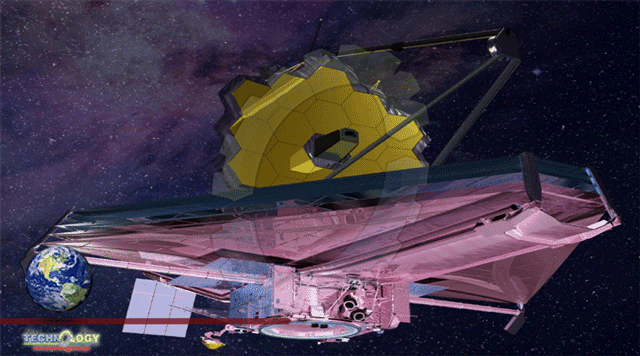The James Webb Space Telescope has now passed another critical milestone – the sunshield is deployed and it looks like a kite or diamond in space.

The James Webb Space Telescope has now passed another critical milestone – the sunshield is deployed and it looks like a kite or diamond in space. The team will now begin the sunshield tensioning activities which include separating and stretching the five layers to create enough space between them to help radiate the heat.
The sunshield is made of a lightweight material called Kapton. The layers of the tennis-court-sized sunshield (21.197 m x 14.162 m) are also coated with aluminum and doped-silicon. The sunshield will help the telescope cool down to -223°C.
NASA said in a release that the engineers will begin with the bottom layer – the largest and flattest layer, which is closest to the Sun and will reach the highest temperatures. This layer is 0.05 millimetres thick, while the other four are 0.025 mm. The silicon coating is about 50 nanometres thick, while the aluminum coating is approximately 100 nm thick.
“The [tensioning] process involves sending commands to activate several motors to reel in a total of 90 cables through numerous pulleys and cable management devices,” the space agency said. Though the process is expected to last at least two days, NASA said that it may take longer, due to the complexity of the process.
Mike Menzel, of NASA’s Goddard Space Flight Center, Webb’s lead systems engineer said: “We’ve spent 20 years on the ground with Webb, designing, developing, and testing…We’ve had a week to see how the observatory actually behaves in space. It’s not uncommon to learn certain characteristics of your spacecraft once you’re in flight. That’s what we’re doing right now. So far, the major deployments we’ve executed have gone about as smoothly as we could have hoped for. But we want to take our time and understand everything we can about the observatory before moving forward.”
These steps will ensure that the James Webb Space Telescope is in good condition to start the next deployment steps which include unfolding its secondary and primary mirrors.
“Nothing we can learn from simulations on the ground is as good as analysing the observatory when it’s up and running,” said Bill Ochs, Webb project manager, based at NASA’s Goddard Space Flight Center in a release. “Now is the time to take the opportunity to learn everything we can about its baseline operations. Then we will take the next steps.”
Source: msn
